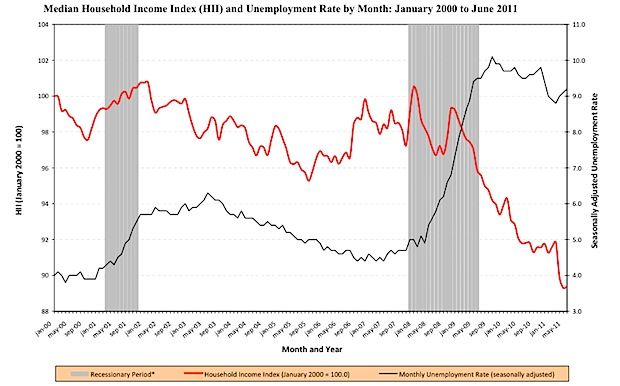If you can’t beat them then try to hijack their cause.
by Glenn Greenwald
When I first wrote in defense of the Occupy Wall Street protests a couple of weeks ago, I suggested that much of the scorn then being expressed by many progressives was “grounded in the belief that the only valid form of political activism is support for Democratic Party candidates.” Since then, even the most establishment Democrats have fundamentally changed how they talk about the protests – from condescension and hostility to respect and even support – and The New York Times today makes clear one significant factor accounting for this change:
Leading Democratic figures, including party fund-raisers and a top ally of President Obama, are embracing the spread of the anti-Wall Street protests in a clear sign that members of the Democratic establishment see the movement as a way to align disenchanted Americans with their party.
The Democratic Congressional Campaign Committee, the party’s powerful House fund-raising arm, is circulating a petition seeking 100,000 party supporters to declare that “I stand with the Occupy Wall Street protests.”
The Center for American Progress, a liberal organization run by John D. Podesta, who helped lead Mr. Obama’s 2008 transition, credits the protests with tapping into pent-up anger over a political system that it says rewards the rich over the working class – a populist theme now being emphasized by the White House and the party. The center has encouraged and sought to help coordinate protests in different cities.
[]
Can that scheme work? Can the Occupy Wall Street protests be transformed into a get-out-the-vote organ of Obama 2012 and the Democratic Party? To determine if this is likely, let’s review a few relevant facts.
The last and best part of Glenn’s article is the up date:
UPDATE: Here are the top recipients of campaign donations from the “securities and investment” industry from 1989 through 2010 (h/t muddy thinking):
Would it not be a bit odd for a protest movement to “Occupy Wall Street” while simultaneously devoting itself to keeping Wall Street’s most lavishly funded politician in power?
Former Sen. Russ Feingold, founder of Progressives United, tells Keith he both supports and is excited about the Occupy protests. Feingold is calling on Democrats to not play “cautious politics” and to join the movement, saying conservatives are attempting to mock the protests because “they’re very nervous that this might work.” Feingold adds, “My sense is that there is great fear that this sweet deal that a lot of these people have in both Washington and New York … is finally being threatened and challenged.”


 The Bavarian royalty invited the citizens of Munich to attend the festivities, held on the fields in front of the city gates. These famous public fields were named Theresienwiese-“Therese’s fields”-in honor of the crown princess; although locals have since abbreviated the name simply to the “Wies’n.” Horse races in the presence of the royal family concluded the popular event, celebrated in varying forms all across Bavaria.
The Bavarian royalty invited the citizens of Munich to attend the festivities, held on the fields in front of the city gates. These famous public fields were named Theresienwiese-“Therese’s fields”-in honor of the crown princess; although locals have since abbreviated the name simply to the “Wies’n.” Horse races in the presence of the royal family concluded the popular event, celebrated in varying forms all across Bavaria.
 The Mary Rose was a carrack-type warship of the English Tudor navy of King Henry VIII. After serving for 33 years in several wars against France, Scotland, and Brittany and after being substantially rebuilt in 1536, she saw her last action on 19 July 1545. While leading the attack on the galleys of a French invasion fleet, she sank in the Solent, the straits north of the Isle of Wight. The wreck of the Mary Rose was rediscovered in 1971 and salvaged in 1982 by the Mary Rose Trust in one of the most complex and expensive projects in the history of maritime archaeology. The surviving section of the ship and thousands of recovered artefacts are of immeasurable value as a Tudor-era time capsule.
The Mary Rose was a carrack-type warship of the English Tudor navy of King Henry VIII. After serving for 33 years in several wars against France, Scotland, and Brittany and after being substantially rebuilt in 1536, she saw her last action on 19 July 1545. While leading the attack on the galleys of a French invasion fleet, she sank in the Solent, the straits north of the Isle of Wight. The wreck of the Mary Rose was rediscovered in 1971 and salvaged in 1982 by the Mary Rose Trust in one of the most complex and expensive projects in the history of maritime archaeology. The surviving section of the ship and thousands of recovered artefacts are of immeasurable value as a Tudor-era time capsule.
Recent Comments